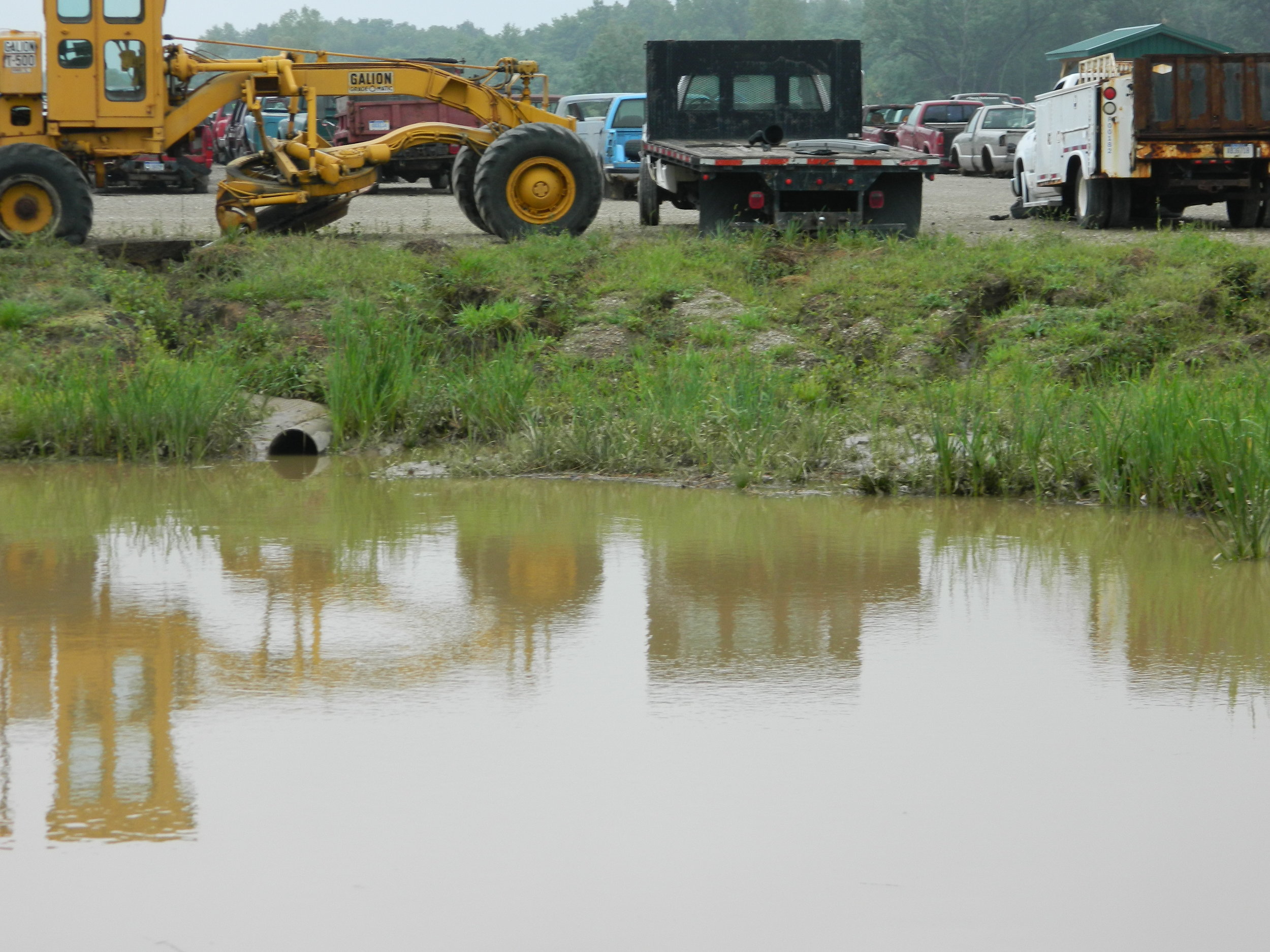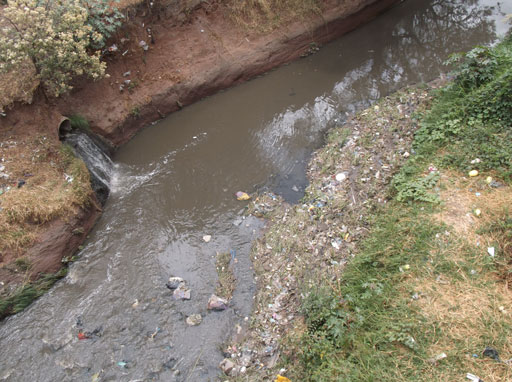Industrial Wastewater Treatment: Advanced Methods for Effective Administration
Industrial Wastewater Treatment: Advanced Methods for Effective Administration
Blog Article
How Fluid Garbage Disposal Works: A Comprehensive Summary of Strategies and Technologies Employed

Overview of Liquid Waste Types
The complexity of liquid waste kinds necessitates an extensive understanding of their attributes and effects for disposal. Fluid waste can generally be classified into several types, including commercial, metropolitan, farming, and contaminated materials. Each classification displays unique buildings, requiring details monitoring strategies to mitigate ecological and wellness dangers.
Industrial liquid waste stems from making processes and typically includes a variety of impurities, such as heavy metals, solvents, and organic substances. Local liquid waste, mostly making up wastewater from homes and commercial facilities, includes raw material, nutrients, and virus (industrial wastewater treatment). Agricultural liquid waste, including overflow from farms, might have fertilizers, chemicals, and animal waste, posing threats to water high quality and communities
Unsafe liquid waste is characterized by its poisoning, sensitivity, or potential to create damage. Comprehending these varied liquid waste kinds is important for creating effective disposal methods and making sure conformity with environmental guidelines.
Physical Therapy Methods

Screening is the initial action, where bigger particles and particles are eliminated from the liquid waste utilizing screens or grates. In sedimentation storage tanks, heavier fragments work out at the bottom, forming a sludge layer, while the made clear liquid can be further dealt with.
Filtering is one more vital method that entails passing the liquid through permeable materials, such as sand or membranes, to record smaller fragments. This step boosts the top quality of the liquid, making it suitable for succeeding treatment procedures.

Chemical Treatment Techniques
Chemical treatment techniques are crucial for successfully managing liquid waste, especially in attending to liquified and colloidal contaminants that physical techniques may not effectively get rid of. These strategies utilize different chemical representatives to reduce the effects of, speed up, or change harmful substances into much less hazardous types.
One usual technique is coagulation and flocculation, where chemicals such as alum or ferric chloride are added to promote the gathering of put view publisher site on hold particles. This process improves sedimentation, enabling much easier elimination of the resulting sludge. Additionally, oxidation processes, using representatives like chlorine or ozone, are employed to damage down intricate natural compounds and microorganisms, making the waste more secure for discharge or further treatment.
Neutralization is another essential technique, which changes the pH of acidic or alkaline waste streams to neutral levels, protecting against potential harm to downstream systems and the atmosphere. Moreover, progressed oxidation procedures (AOPs) utilize combinations of oxidants and ultraviolet light to weaken persistent toxins, achieving a higher level of treatment efficiency.
Biological Treatment Processes
Biological treatment procedures play a crucial role in the management of liquid waste by utilizing microorganisms to break down raw material and minimize pollutant levels. These processes can be broadly classified right into anaerobic and cardiovascular treatments, each employing specific microbial communities to achieve effective waste degradation.
Cardio therapy entails making use of oxygen to assist in the malfunction of organic materials by bacteria. This procedure is frequently executed in triggered sludge systems, where aeration tanks provide a conducive setting for microbial development, bring about the oxidation of natural contaminants. The resultant biomass can be separated from dealt with effluent with sedimentation.
On the other hand, anaerobic therapy takes place in the absence of oxygen, relying upon various germs to break down raw material. This approach is especially advantageous for high-strength waste, as it creates biogas, a sustainable energy resource, while reducing sludge manufacturing. Technologies such as anaerobic digesters are frequently used in local and industrial applications.
Both cardio and anaerobic organic treatments not just reduce the ecological impact of fluid waste but likewise facilitate source healing, making them necessary components of lasting waste management methods. Their adaptability, performance, and performance sustain their extensive application throughout various industries.
Emerging Technologies in Disposal
Ingenious techniques to fluid garbage disposal are quickly advancing, driven by improvements in innovation and an enhancing emphasis on sustainability. Among these arising modern technologies, membrane layer bioreactors (MBRs) have obtained traction for their ability to incorporate organic therapy with membrane filtering, causing top notch effluent that can be recycled in various applications. MBRs allow smaller sized impacts and extra reliable operations compared to typical systems.
An additional promising development is using anaerobic digestion integrated with nutrient healing innovations, which not only treats fluid waste yet likewise generates biogas and recoups important nutrients like nitrogen and phosphorus. This double benefit enhances resource efficiency and reduces ecological influence.
In addition, progressed oxidation processes (AOPs) are being embraced for the deterioration of complex organic toxins. These approaches use effective oxidants and drivers to damage down contaminants important site at the molecular degree, supplying a view publisher site highly reliable remedy for difficult waste streams.
Additionally, the combination of synthetic intelligence and artificial intelligence in waste management systems is maximizing operational efficiency and anticipating maintenance, leading to decreased prices and enhanced environmental conformity. These modern technologies reflect a substantial change towards even more sustainable and reliable fluid waste disposal techniques.
Final Thought
In conclusion, reliable fluid waste disposal demands a detailed understanding of various strategies and technologies. The integration of physical, chemical, and organic treatment techniques ensures the effective management of varied waste types. In addition, the development of cutting-edge technologies improves treatment effectiveness and advertises sustainability in waste administration techniques. By continuously progressing these methodologies, it ends up being feasible to address the expanding difficulties related to fluid waste, inevitably contributing to environmental protection and source healing.
Liquid waste disposal is a crucial element of ecological monitoring, calling for a comprehensive understanding of various techniques and innovations customized to different waste kinds. Fluid waste can generally be classified into numerous kinds, consisting of commercial, metropolitan, farming, and unsafe waste. Agricultural fluid waste, including runoff from farms, may contain fertilizers, chemicals, and animal waste, positioning risks to water quality and communities.
Different physical treatment methods play a vital function in handling liquid waste efficiently - industrial wastewater treatment.In conclusion, effective fluid waste disposal demands a thorough understanding of numerous methods and innovations
Report this page